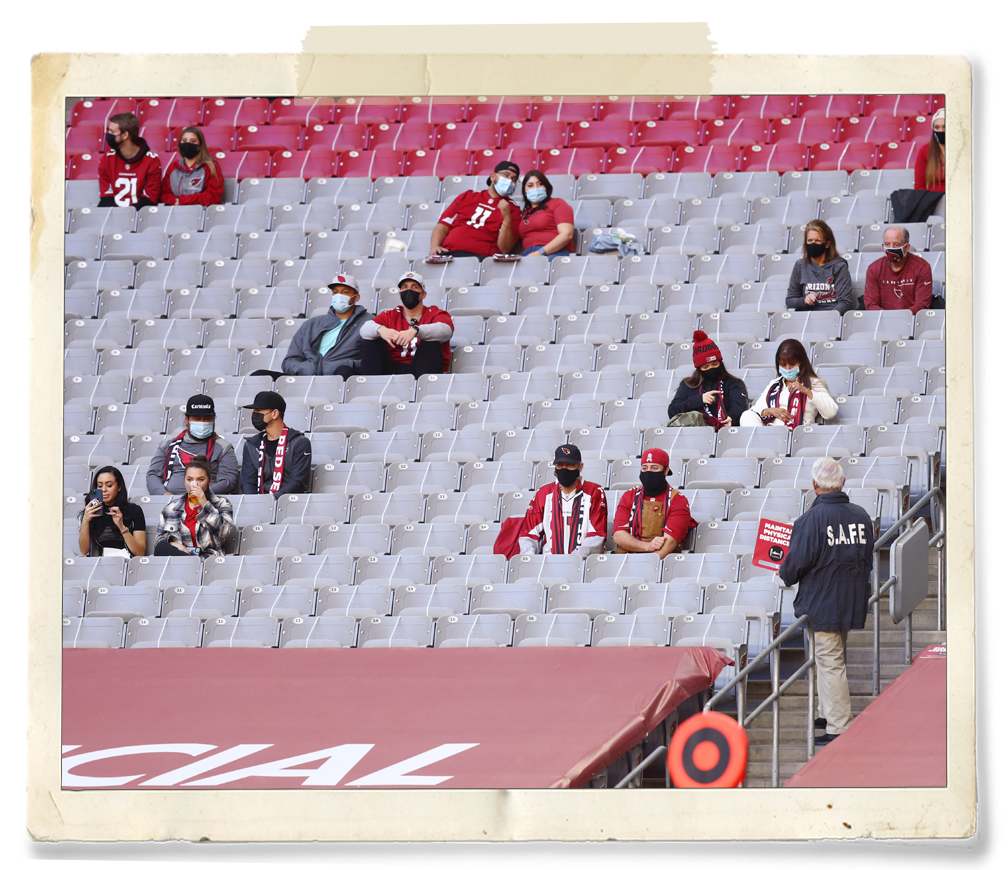LIVE SPORTING ACTION WITH CROWDS
Spectators were allowed to return partially to watch live sports action. Genuine applause rippled through stadiums for the first time in months. The hope of packed arenas soon looked a possibility

AP
Arizona Cardinals spectators sit distanced in the first quarter of the NFL game against the San Francisco 49ers at State Farm Stadium in Glendale, Arizona, in the US on December 26, 2020.
Sport is a spectacle. Without spectators, sport diminishes in value. There’s pride and joy in victory. Tears and sorrow in a loss. The presence of spectators enhance these moments, their cheers motivate players. The applause will continue to reverberate in the minds of players long after the games.
Empty stadiums allowed sport to resume in a year bruised by the rampaging coronavirus. As the year wore on, when life limped back towards normality with safety protocols, sport too witnessed the partial return of supporters.
Spectators bring revenues. Clicking turnstiles keep the cash registers ringing. Sports bodies have suffered financially in the absence of crowds. In the United Kingdom, 100 sports associations wrote to Prime Minister Boris Johnson seeking emergency funding, citing loss of activity due to coronavirus. English football clubs were reported to have lost £50m in gate receipts last season.
Cricket fans were the first attend live sports in England. In July, around 1,000 people made their way to two friendlies. They were masked and used sanitisers before entering the stadium. Genuine applause rang out through the grounds.
Australians too watched live cricket action when they hosted the New Zealand women’s team for one-day internationals.
In other games, about 300 people watched World Snooker Championship final in Sheffield in August. More than 2,500 spectators were at the St Leger race meeting in Doncaster on September 9, the first crowd at a British horse racing fixture in six months.
Germany was one of the first countries to allow spectators into football stadiums. Tens of thousands of supporters were permitted to attend Bundesliga football matches in areas that do not have a high number of COVID-19 cases.
Russia allowed some of the biggest crowds at sports events in Europe. In October, around 16,000 people watched a Champions League football game between Zenit St. Petersburg and Brugge, and 10,500 were at Krasnodar’s game against Chelsea.
Encouraged by these examples, England decided to allow up to 4,000 spectators in low-risk areas (Tier 1) in December. Although 2,500 people had watched a friendly between Brighton and Chelsea in August, the first competitive football fixture with supporters in nine months was held on December 5. Around 2,000 masked people watched Manchester United win against West Ham at the London Stadium.
Then the new variant of the virus showed up.